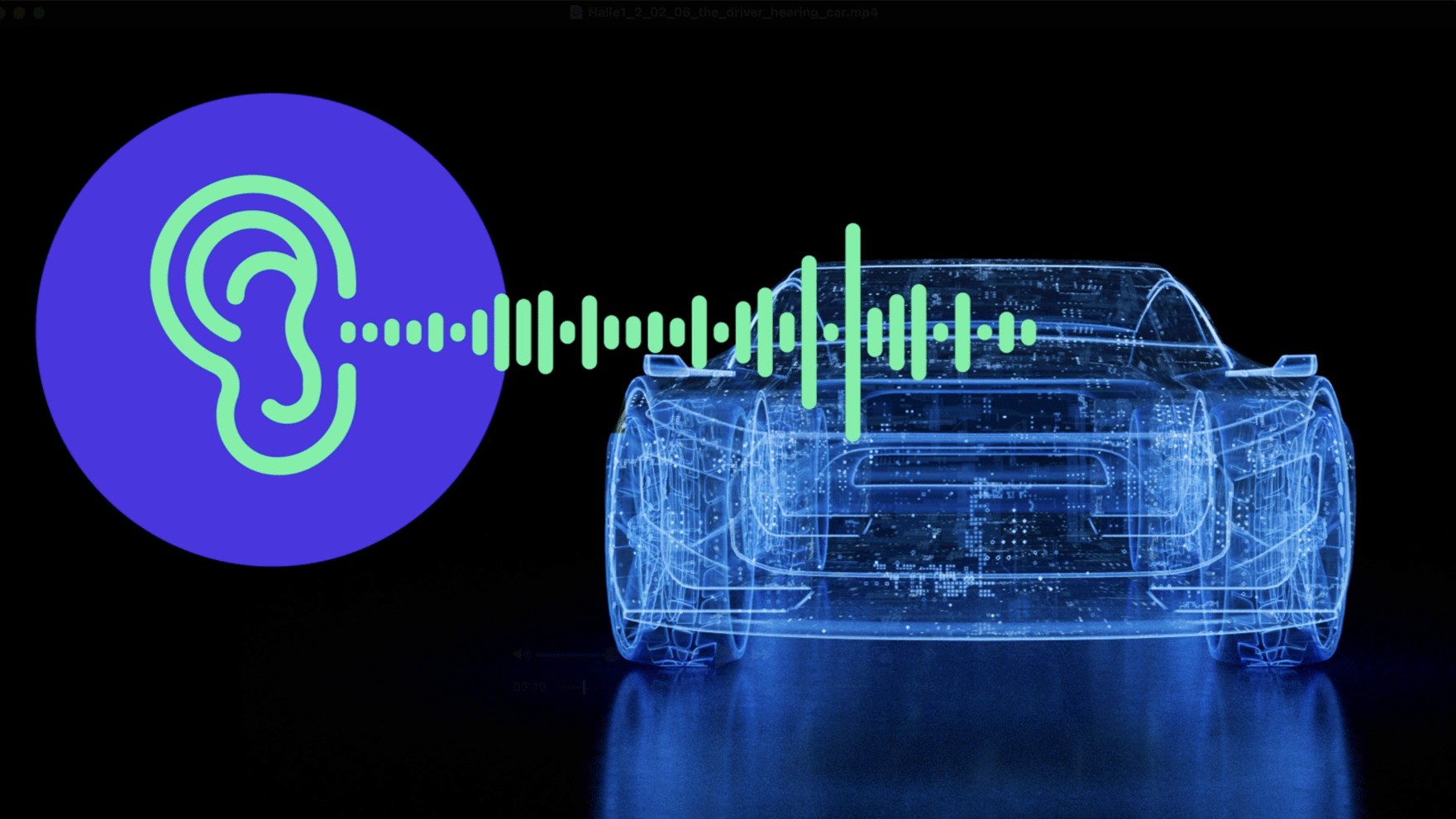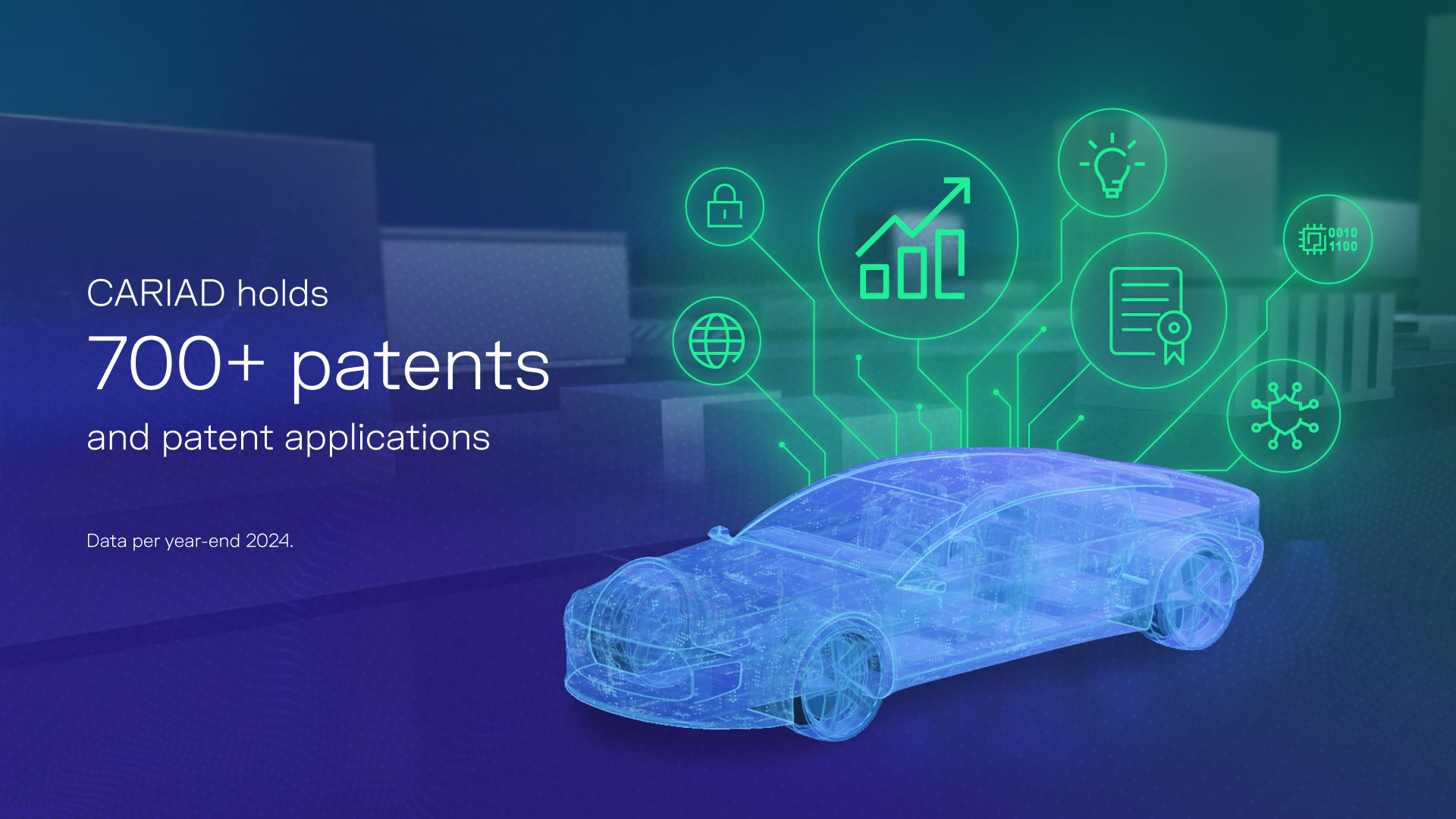How can we create an AI-ready automotive architecture?
While AI holds vast promises to unlock future cash pools in the automotive industry, challenges on how to create a future car platform remain to be solved.

The car is in prime position to become the digital platform of the next decade. According to the Odyssee Mure project, the average annual distance travelled by car in Germany alone is 13,800 km.[1] To make that time in the car more comfortable and entertaining, customers demand digital and intelligent functions in the car.[2] As a result, more is required of the automotive architecture.
At CARIAD, our goal is to build the leading tech stack of the automotive industry. A ‘smartphone on wheels’ needs to support artificial intelligence (AI) in its various applications to bring smart functions to our customers. By adding AI capabilities to vehicles, we can truly transform the car and, with it, the user experience.[3]
There’s a whole variety of opportunities for artificial intelligence-based applications in the vehicle of the future. We can provide outstanding customer value through functions like intelligent digital assistants, advanced driver assistance systems (ADAS), smart vehicle motion control and personalized mobility products.
"Data is a strategic asset for CARIAD. I'm convinced that artificial intelligence holds tremendous potential to unlock future customer benefits and will be a competitive ability that will set us apart." – Dirk Hilgenberg, CEO CARIAD SE
Yet, making the car of the future AI-ready is a challenge in itself. Data-driven function development is different from traditional software development. The car has to support new AI-specific needs, including those related to the software and hardware architecture, data selection, a back-end connection, in-vehicle prediction monitoring, and many more.
Opportunities to generate value from AI also bring with them new implementation challenges. This article focuses on those obstacles and the potential solutions offered by a vehicle architecture to support AI in the best possible way.

The vehicle architecture
The fundamental component of an AI-ready vehicle architecture is the connection of the car to a backend. This connection is the backbone needed to develop applications for the car and to keep it constantly up to date with over-the-air software updates. This connection is also the vital bloodline to feed AI-based applications with new data.

From the perspective of vehicle hardware, running AI models is still very resource-intensive. The performance of neural networks can be optimized with the right hardware, such as graphical processing units. Yet, the vehicle architecture of the future needs to balance Data Scientists’ needs for powerful hardware with the economic constraints associated with the production of millions of vehicles every year at a competitive price. We’re also aiming to continuously improve and potentially grow our AI-based product footprint in the car. Ideally, the future vehicle architecture will provide powerful hardware with enough headroom to update AI models, while still adapting to cost constraints.
Data selection
Cars of the future will become intelligent data collection devices. Data is the foundation for any AI-based application. Modern vehicles contain a variety of sensors with the potential to gather data at rates of 4 GB/s and more. While data is one of the most important assets of the automotive industry, it’s also easy to drown in too much irrelevant data. Transporting data into the backend also incurs carrier charges, which need to be minimized – especially for a company like VW, whose products equate to millions of devices. Deep learning-based functions benefit tremendously from having access to the right data and being able to continually improve on incoming data.
Backend infrastructure
Once the valuable data is stored in the backend, we need the right infrastructure to analyze the data. This backend architecture needs to be scalable to handle the changing velocity, volume and variety of data as more devices become connected. It also needs to support powerful hardware to train AI models. Naturally, the backend architecture has to comply with legal data privacy regulations like GDPR.
Additionally – and this is often not discussed enough – the infrastructure needs to support the right processes, methods and tools to develop AI-based applications for an automotive setting. Developing AI models in an automotive context must follow existing standards and norms like SOTIF and UL4800. AI tooling and processes therefore need to integrate well into the whole system. Some machine learning models can contain stochastic, or random, components. In these cases, models are non-deterministic, meaning that there may be different outputs even with the same input value. With that in mind, we need to consider the safety aspects involved in handling data and designing the development infrastructure.

Our goal at CARIAD is to overcome the challenges mentioned above and provide a new vehicle architecture that helps data scientists to fully utilize the potential of AI. So, what can we do next?
Hardware capabilities
We established that we need enough computational power in the vehicle to run large AI models in real time. To avoid being limited by economic constraints when selecting the hardware for a car generation, we need to provide powerful hardware with enough headroom to continuously update AI models in the future.
Vehicles of the future will be defined by software and not hardware. At the same time, we need to make sure that our AI capabilities are not restricted by outdated hardware with limited capacity. This hardware should also provide targeted AI acceleration capabilities. VW Group CEO Herbert Diess recently mentioned in an interview with German newspaper Handelsblatt that VW wants to move closer into designing custom chips to accommodate specific AI requirements.[4]
Modern cars contain up to 100 connected control devices with thousands of electronic components.[5] Close collaboration with system-on-a-chip suppliers is therefore needed to build innovative and reliable systems for AI-enabled future mobility.
Identifying edge cases
So that we can collect the right data, we need to identify valuable data in real time. It’s also extremely important that we collect specific and uncommon data. Data is especially valuable when it depicts less-common situations – so-called edge cases – as it allows us to improve existing models and to gain insights into the workings of AI in the real world. Collecting monotonous mileage data on a highway trip might be less interesting than the data before and after emergency braking, for example.
As data scientists, we’re interested in two types of edge cases: ‘known unknowns’ and ‘unknown unknowns’.
The first type, ‘known unknowns’, are situations where we know that the AI model has room for improvement. A good example is a neural network that identifies stop signs well, but fails to identify speed signs properly. To collect this data, we can create data collection campaigns that automatically save all speed signs that the AI model recognizes.
The second type, ‘unknown unknowns’, are situations where we don’t yet know that our model will misbehave. Neural networks are notorious black boxes, so data scientists don’t always know what the model doesn’t know. Applying uncertainty estimation methods to these neural networks helps data scientists to understand when the models are unsure about their predictions. This data is very valuable and can then be stored.
AI infrastructure with automotive-grade processes, methods and tools
In the backend, data scientists need computing power and access to data to create AI models. The incoming data needs to be labeled and prepared for training. A process to collect and label the incoming data might look like the graphic below:

Data scientists also need to follow strict automotive-grade processes and use certified tools to develop AI software. One specific example is that we need to prove a clear connection between a requirement for a feature and the corresponding line of code. This concept is called traceability and is rarely understood or emphasized in the online data science space, but is mission-critical for automotive software development.
When training the AI model, it’s essential to log which dataset was used for training, what the network architecture looked like, and what the result was after a certain threshold of iterations. Each AI model needs to reference the broader environment and infrastructure used for training. This includes the version of the source code – usually identified through Git commit hashes – and used libraries. Specific augmentations of the data and the used random seeds also have to be logged to ensure traceability and compliance.[6]
The strictness required to store data about training the AI model also applies to the steps of training preparation. We need metadata for each dataset, such as information on the vehicle that recorded the data, which sensors it used, and how they were configured and calibrated.
Lastly, providing as much automation through automotive-grade MLOps tooling increases the software maturity of AI products. Automating repetitive development steps supports the team, allowing it not only to be cost-effective, but also to focus on its core competences. Here, we need a platform which automates model management and data processing. New data and other triggers could start retraining the model automatically.
Monitoring AI models in the vehicle is also an essential part in the entire data and inference value chain. We need to constantly check the data distribution over time to avoid model or data drift. We also need to observe model performance after deployment.

Conclusion
Turning a traditional automotive architecture into an AI-ready architecture is no easy feat. The required skills extend beyond designing an electrics/electronics architecture to creating a scalable, connected development infrastructure. Bringing large amounts of data into the cloud and processing it is a challenge for many industries. But transferring the right data in large volumes, in a structured way and from many devices is a new challenge. Data is a sensitive asset and data collection must embrace data privacy guidelines. Taking care of data quality, inference monitoring, and traceability in the development process is crucial to developing safe, AI-based products.
An AI-ready automotive architecture consists of powerful hardware in the vehicle, allows the collection of valuable data, and connects to an automotive-grade software development infrastructure. Combining these factors will put the automotive industry in prime position to reap the benefits of data-driven software development.
[2] Deloitte 2020 Global Automotive Consumer Study
[3] https://www.nzz.ch/wirtschaft/dirk-hilgenberg-das-auto-wird-zum-handy-auf-vier-raedern-ld.1600234
[5] https://www.volkswagenag.com/en/news/stories/2017/09/customized-chips.html#
[6] https://autonomous-driving.org/2018/06/16/dataset-management-for-machine-learning




